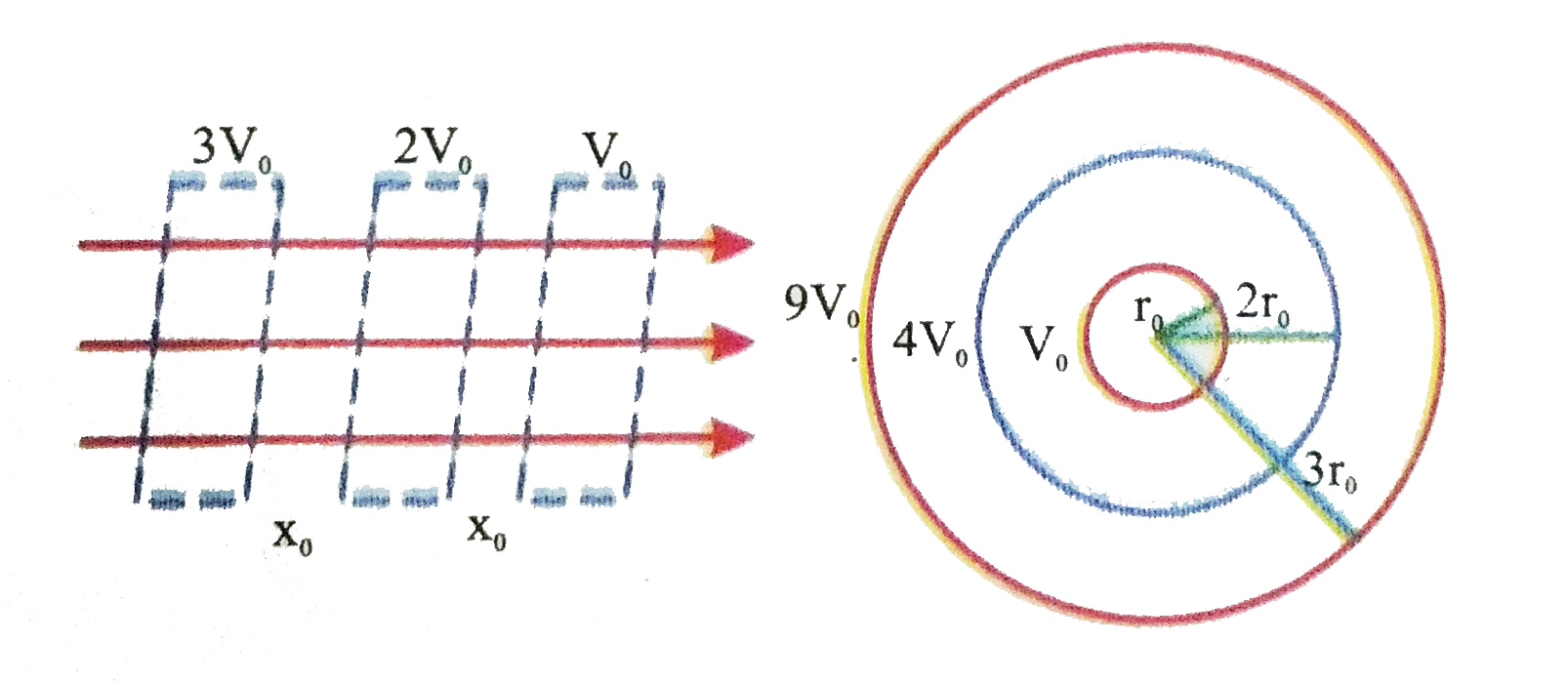Some equipotential surfaces are shown in figure. What can you say about the magnitude and the direction of the electric field ?

Here, we can say that the electric will be perpendicular to equipotential surfaces.
also, ∣∣→E∣∣=ΔVΔd
Where, ΔV= potential difference between two equipotential surfaces.
Δd= perpendicular distance between two equipotential surfaces.
So |vec(E)|=60/((10 sin 37^(º))xx10^(-2))=1000 V//m
Now there are two perpendicular directions : either direction 1 or direction 2 as shown in figure, but since we know that in the direction of kinetic field, electric decreases, so the correct direction is direction 2.
Hence E=1000V/m, making an angle 127∘ with the x-axis

Topper's Solved these Questions
- ELECTROSTATICSBook:RESONANCEChapter:ELECTROSTATICSExercise:Problems
Explore 22 Videos
- ELECTROSTATICSBook:RESONANCEChapter:ELECTROSTATICSExercise:Exercise-1 Section (A)
Explore 9 Videos
- ELECTROMAGNETIC INDUCTIONBook:RESONANCEChapter:ELECTROMAGNETIC INDUCTIONExercise:A.l.P
Explore 19 Videos
- EXPERIMENTAL PHYSICSBook:RESONANCEChapter:EXPERIMENTAL PHYSICSExercise:PART -II
Explore 10 Videos
Similar Questions
Knowledge Check
Equipotential sufaces are shown in figure a and b the field in
 Aa is uniform onlyBb is uniform onlyCa and b is uniformDboth are nonuniform
Aa is uniform onlyBb is uniform onlyCa and b is uniformDboth are nonuniformSome equipotential surfaces are shown in figure .The electric filed strength is
 A100V/m along x-axisB100v/m along y-axisC400V/m at an angle 120∘ with x-axisD400√3V/m an angle 120∘ with x-axis
A100V/m along x-axisB100v/m along y-axisC400V/m at an angle 120∘ with x-axisD400√3V/m an angle 120∘ with x-axisSome equipotential surfaces are shown in figure . The magnitude and direction of electric field is
 A2V/cm at angle 120∘ with +ve x-axis in anticlockwise directionB2V/cm at angle 120∘ with +ve x-axis in clockwise directionC1V/cm at angle 150∘ with +ve x-axis in anticlockwise directionD1V/cm at an angle 120∘ with +ve x-axis in clockwise direction
A2V/cm at angle 120∘ with +ve x-axis in anticlockwise directionB2V/cm at angle 120∘ with +ve x-axis in clockwise directionC1V/cm at angle 150∘ with +ve x-axis in anticlockwise directionD1V/cm at an angle 120∘ with +ve x-axis in clockwise direction
Some equipotential surfaces are shown in the figure below, what can you say about the magnitude and the direction of the electric field ?

View SolutionOn the basis of your understanding of the following paragraph and the related studied concepts.
An equipotential surface is a surface with a constant value of electric potential at all points on the surface. The component of electric field parallel to an equipotential surface is zero, as the potential does not change in this direction. Thus, the electric field is perpendicular to the equipotential surface at each point of the surface. Further, say the direction of electric field electrical potential gradually fall with distance.
Four equipotential surfaces are shown in the adjoining figure. Find the magnitude and direaction of the electric field.

View SolutionSome equipotential surface are shown in the figure. Find the value of electric field :-

View SolutionWhen MP is zero, what can you say about TP ?
View SolutionWhat can you say about the area of two congruent figures?
View Solution



